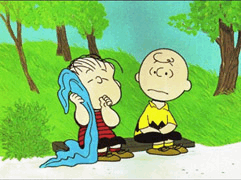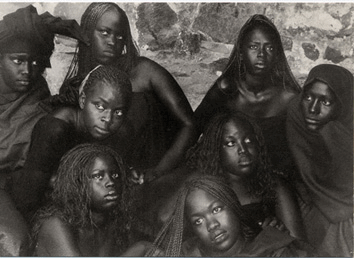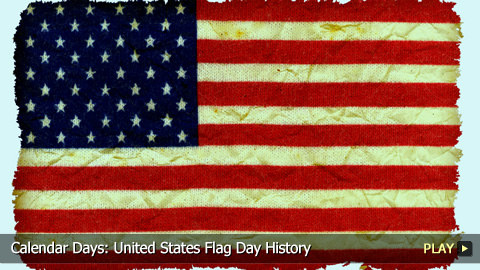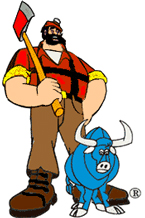•→ http://projectbritain.com/americanbritish.html←
British English ↔ American English↔ 
Hello! – Hullo!
♦ John Green kicks off Crash Course US History ↓
∇ · · · A shorter History of the States ↓ [4 Minutes]
∇ A brief history of African slavery & colonization ∇
¤ THE NATIONAL PARKS: AMERICA’S BEST IDEA ↓
A six-episode series produced by Ken Burns and Dayton Duncan and written by Dayton Duncan. Filmed over the course of more than six years at some of nature’s most spectacular locales – from Acadia to Yosemite, Yellowstone to the Grand Canyon, the Everglades of Florida to the Gates of the Arctic in Alaska – THE NATIONAL PARKS: AMERICA’S BEST IDEA is nonetheless a story of people: people from every conceivable background – rich and poor; famous and unknown; soldiers and scientists; natives and newcomers; idealists, artists and entrepreneurs…
⇐ • Flag Day is a day for all Americans to celebrate and honor their flag, its makers and designers. The American flag is representative of the independence and unity of the country: “one nation under god, indivisible.”
• A Proud History
The American Flag has a proud and glorious history. It was at the lead of every battle fought by Americans, and many have died protecting it. It even stands proudly on the surface of the moon. Americans pledge allegiance to their flag as a promise of loyalty and devotion to their nation.
• Establishment of a New Flag
Flag Day is always celebrated on June 14th, because it was on that day in 1777 that the Second Continental Congress passed an act establishing an official flag for the new nation. The resolution ordered that the flag of the United States was made of 13 stripes that alternated between red and white, in addition to a blue field covered with 13 stars.
• Official Flag Day
While Flag Day was celebrated in various communities for years after President Woodrow Wilson established it in 1916, it was not until August 1949 that President Harry S. Truman signed an Act of Congress that designated June 14th of each year as National Flag Day.
• Questionable Origins
While no one knows the exact origin of the first American flag, some historians believed it was designed by Congressman Francis Hopkinson, or sewn by Philadelphia seamstress Betsy Ross.
• What the Flag Represents
Today, the flag consists of 13 horizontal stripes: seven red alternating with six white. The stripes represent the original 13 colonies, while the stars represent the 50 states of the union. The colors of the flag are also symbolic: red signifies heartiness and valor, white denotes purity and innocence, and blue represents vigilance, perseverance and justice.
• Learn More About U.S. History
The American flag is a huge part of the history of the United States. To learn more about U.S. history, check out WatchMojo.com.
÷ ÷ ÷ ÷
∇ Unique New York . . .
⇒ Manhatta ↓ [1921]
In 1920 Paul Strand and artist Charles Sheeler collaborated on Manhatta, a short silent film that presents a day in the life of lower Manhattan. Inspired by Walt Whitman‘s book Leaves of Grass, the film includes multiple segments that express the character of New York. The sequences display a similar approach to the still photography of both artists.
¶ «Mannahatta« ⇓ a poem by Walt Whitman [1819 – 1892]
⇑ ‘Broadway’
What hurrying human tides, or day or night!
What passions, winnings, losses, ardors, swim thy waters!
What whirls of evil, bliss and sorrow, stem thee!
What curious questioning glances–glints of love!
Leer, envy, scorn, contempt, hope, aspiration!
Thou portal–thou arena–thou of the myriad long-drawn lines and groups!
(Could but thy flagstones, curbs, facades, tell their inimitable tales;
Thy windows rich, and huge hotels–thy side-walks wide;)
Thou of the endless sliding, mincing, shuffling feet!
Thou, like the parti-colored world itself–like infinite, teeming, mocking life!
Thou visor’d, vast, unspeakable show and lesson!
¤ Twenty-four dollar Island (1927)
«You understand that I am speaking of a film in which New York is the central character, not a picture in which individuals are portrayed, which would make New York merely the background for a story. I am talking about the picture in which New York is the story.» Robert Flaherty —The new score by Donald Sosin provides a strong complement
The film opens with an image on paper: an historic drawing of the 1626 trade Dutchman Peter Minuit supposedly made with Native Americans—boxes of trinkets worth $24 for Manhattan Island. Title cards tell us the Dutch immediately built 30 houses. Next, we learn the new city of New Amsterdam grew to 1,000 residents by 1656. The film then juxtaposes a drawn map of the original New Amsterdam settlement with photos of the metropolis that had spread out on the same site by 1926, the year this film was shot. The next title card introduces Flaherty’s subject proper: “New York, symbol of impressive industry, finance, power, where men are dwarfed by the immensity of that which they have conceived—machines, skyscrapers—mountains of steel and stone.”
A couple of men are glimpsed on the edges of the frame as they maneuver some earth-moving equipment into place. Steel clam shovels dig into the sand and move on threads of chain into the air to deposit their loads in a nearby container. The music, which until now had trafficked in Native American motifs, starts to take on a stronger rhythmic intensity, as though it were imitating the heartbeat of the city, and synthesized tones emphasize the mechanistic nature of the subject. Ships belching black smoke and dwarfing nearby ferries and tugboats fill the frame. The Hudson River, visible on the maps shown at the beginning of the film, seems to be brimming with seafaring traffic, like a bathtub awash in rubber duckies and toy boats. Bridges spanning from the island to the surrounding land cut a swath through the sky; when the river traffic and bridges enter the same frame, the sky is all but obliterated. The total encroachment of the urban human habitat on the natural landscape of the island will fill the frame at the end of the film. [Marilyn Ferdinand]
Φ Watch two samples of a series of films featuring ‘Elements’ of NY, by Chuck Fishbein, and inspired by 24-dollar Island . . . ⇒ ‘STEAM’⇐ / ⇒‘One August Day’⇐
¤ Robert Florey’s Skyscraper Symphony ⇓ [1929]
Robert Florey [1900-1979] is the supreme instance in the silent era of a professional filmmaker whose dissatisfaction with commercial assignments led him into parallel work as an avant-garde independent.
Skyscraper Symphony, his montage of Manhattan architecture (running time: 9 minutes), is in a genre that would have been familiar to audiences of the new art cinema movement. “City symphonies”—documentary images of urban landscapes edited into semiabstract visual rhythms—had begun in the United States with Manhatta (1921), and others had been imported from Europe, most influentially ⇒Berlin: Symphony of a Great City ⇐(1927).
Born in Paris in 1900, Florey came to America in 1921 as a newspaper correspondent. Beginning in 1923, he directed a few shorts and minor features but earned higher salary and satisfaction as assistant to the era’s top directors— Henry King, Frank Borzage, King Vidor, and Josef von Sternberg among them—while writing books to explain Hollywood to the French. In 1925, he also began experimenting with his own short films. First to be shown publicly was the small masterpiece of expressionist satire ⇒The Life and Death of ‘9413’—a Hollywood Extra ⇐(1927).
¤ Man on Wire [2008]
On August 7th 1974, a young Frenchman named Philippe Petit stepped out on a wire illegally rigged between New York’s twin towers, then the worlds tallest buildings. After nearly an hour dancing on the wire, he was arrested, taken for psychological evaluation, and brought to jail before he was finally released.
Following six and a half years of dreaming of the towers, Petit spent eight months in New York City planning the execution of the coup. Aided by a team of friends and accomplices, Petit was faced with numerous extraordinary challenges: he had to find a way to bypass the WTCs security; smuggle the heavy steel cable and rigging equipment into the towers; pass the wire between the two rooftops; anchor the wire and tension it to withstand the winds and the swaying of the buildings.
The rigging was done by night in complete secrecy. At 7:15 AM, Philippe took his first step on the high wire 1,350 feet above the sidewalks of Manhattan. James Marsh‘s documentary brings Petits extraordinary adventure to life through the testimony of Philippe himself, and some of the co-conspirators who helped him create the unique and magnificent spectacle that became known as the artistic crime of the century. (from imdb.com)
This clip shows Philippe’s performing his act ⇓ to the sound of Satie’s Gymnopédie
«J’ai tendu des cordes de clocher à clocher ; des guirlandes de fenêtre à fenêtre ; des chaînes d’or d’étoile à étoile, et je danse» Arthur Rimbaud¤ Steve Reich
 A highly influential avant-garde composer and one of the key founders of the minimalist school of music, Reich has embraced a wide variety of musical styles and interests, forging from them a unique synthesis.
A highly influential avant-garde composer and one of the key founders of the minimalist school of music, Reich has embraced a wide variety of musical styles and interests, forging from them a unique synthesis.
∇ ‘Hindenburg’ ⇓
From 1998 to 2002, composer Steve Reich and film maker Beryl Korot collaborated to create ⇒«Three Tales», a trilogy of stories about important technological events of the 20th Century.
The first tale, ‘Hindenburg’, utilizes historical footage, photographs, specially constructed stills and a videotaped interview which provide a setting for the archival material and text about the zeppelin. Starting with the final explosion in Lakehurst, New Jersey in 1937, it also includes material about the zeppelin’s construction in Germany in 1935 and its final Atlantic crossing. The unambiguously positive attitude towards technology is presented through newscasters of the era.
•→ Three Movements for Orchestra ⇐ [a film by Alessandro Manfredi]
¤ Paul Bunyan
One of the most famous and popular North American folklore heroes, he is usually described as a giant as well as a lumberjack of unusual skill, and is often accompanied in stories by his animal companion, Babe the Blue Ox.
Paul Bunyan is a larger-than-life folk hero who embodies frontier vitality. He is a symbol of might, the willingness to work hard, and the resolve to overcome all obstacles. He was popularized by newspapermen across the country in 1910 and has been a part of the American culture ever since.
← Read «A Tall Tale» / Click to read more folk tales ↓
• Paul Bunyan ⇓ [Mel-O-Tunes, 1960]
¤ Charlie Brown
Created, written and illustrated by Charles M. Schulz, «Peanuts» made its debut on October 2nd, 1950, and starred the lovable Charlie Brown and his dog Snoopy. Eventually, the series went on to generate over 18 thousand strips that appeared in more than 2,600 newspapers across 75 countries, in 21 languages while reaching 355 million readers. Immensely popular, this simple 4-panel comic starred a group of kids who would regularly comment upon everyday issues, all while being unable to understand what adults were saying.
♦ Join WatchMojo.com as we explore The Origins of Charlie Brown ⇒
He is the star of the most influential and popular comic of all time. Welcome to WatchMojo.com and today we’ll be taking a look at the origins of Charlie Brown.
The American syndicated comic strip “Peanuts” was originally written and illustrated by Charles M. Schulz. It made its debut on October 2nd, 1950, and starred the lovable Charlie Brown. The series went on to generate over 18 thousand strips that appeared in more than 2,600 newspapers across 75 countries, in 21 languages and reached 355 million readers.
This wildly successful comic standardized the use of four-panel gags and proved to be an unprecedented American success story. Ironically, its protagonist was anything but successful: Charlie Brown was the son of a barber, and was characterized by his nervous and unconfident behavior. He was unable to fly a kite, win at baseball, or even kick a football. Charlie Brown was depicted as an endearing loser with bad luck, but this yellow-shirted child also represented internal fortitude, as he was modeled on the personality of his creator.
Though the “Peanuts” comic strip made its debut in the 1950s, Charlie Brown and his dog pal Snoopy first appeared in 1947. Schulz placed versions of these characters within an earlier comic strip called “Li’l Folks.” This was a weekly panel made available in the author’s hometown paper.
Schulz wanted to launch his creation across the nation, but needed to make some drastic changes before doing so. He was forced to change the name of the strip because it resembled two other comics at the time, and decided on a set cast rather than a variety of nameless characters.
With inspiration from the peanut gallery on the “Howdy Doody Show,” the title “Peanuts” was finally chosen. Interestingly, Schulz never liked this choice of name. Because of this, the paperback comic collections always contained either “Charlie Brown” or “Snoopy” in the title, in an effort to avoid confusing fans of the series who knew it for its stars.
 The rest of the cast slowly began appearing in the “Peanuts’” early years: fans eventually got to know and love supporting characters like Lucy, Linus, “Peppermint” Patty, Woodstock, Franklin, Marcie and Sally.
The rest of the cast slowly began appearing in the “Peanuts’” early years: fans eventually got to know and love supporting characters like Lucy, Linus, “Peppermint” Patty, Woodstock, Franklin, Marcie and Sally.
This group of kids eventually engaged generations of readers through their interactions with one another, and their inability to understand what adults were saying.
Schulz took on all facets of the comic on his own, and this helped him produce a strip with a cohesive and simple style. The creator managed to write the scripts, draw the art and even ink the lettering. He also infused “Peanuts” with subtle and keen social commentary that explored issues like racial and gender equality.
Of course, the “Peanuts” strip was eventually challenged by other comics in the 1980s and ‘90s. Newcomers like “Garfield” as well as “Calvin and Hobbes” began winning more readers, but despite this “Peanuts” remained extremely popular. Schulz continued to produce it until health reasons forced him to retire.
The last daily original comic was published on January 3rd, 2000. Schulz passed away just over a month later on February 12th, and his dying wish was that no one else would continue his beloved series. The “Peanuts” comics has survived under the banner of “Classic Peanuts” and through color reprints.
In the many years since its debut, Charlie Brown and friends made the transition to commercials and Broadway plays, as well as numerous television and film specials. In fact, the gang has appeared in over 50 such events through the years.
In 2007, Warner Bros. acquired the television and film rights to the franchise. This move suggested that Charlie Brown may be introduced to a new generation in the near future.









Hello! I just wish to make a huge thumbs up for the terrific advice you have here on this article. I will be returning to your site for more shortly.
Thankyou for all your efforts that you have put in this. very interesting information.
I really like your writing style, wonderful information, appreciate it for posting : D.
Deference to author , some superb selective information .
Way cool! Some extremely valid points! I appreciate you penning this write-up plus the rest of the site is also really good.